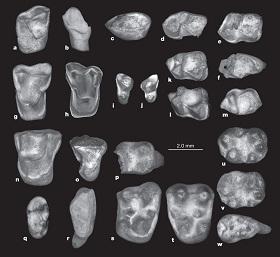Special Issue: Water Narratives
24 December 2025
Published online 27 November 2010

The origin of anthropoids, the higher primates including monkeys, apes and humans, is a matter of debate. Fossil records calculate origins between the Palaeocene to the more recent Eocene epoch 54 million years ago (Myr), while estimates based on DNA divergence extend the history back to the late Cretaceous period 136 Myr. Additionally, there is little consensus on whether anthropoids originated in Africa or in Asia.
An international team of researchers, including four from Libya, uncovered the fossil remains of several different species of early anthropoids during a dig in Dur At-Talah in central Libya.
The newly found fossils belong to anthropoids that would have each weighed from 120 g to 470 g as adults. The researchers suggest that the species found at the site were evolutionary diverse and did not follow a single linage and represent disparate positions on the evolutionary tree. Older, well-excavated sites in northern Africa have so far failed to yield fossils of earlier anthropoids that would evidence the evolutionary emergence of anthropoids.
The team suggests that this lack of a single linage found in Africa means different clades of anthropoids may have migrated to the African continent from Asia sometime during the middle Eocene epoch. Further research will need to be conducted in both Africa and Asia to prove this theory and to better document this stage of primate evolutionary history.
doi:10.1038/nmiddleeast.2010.228
Stay connected: